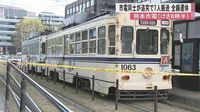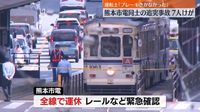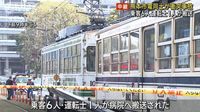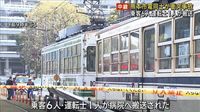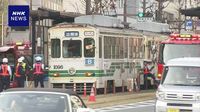In the early hours of March 25, 2025, a rear-end collision involving Kumamoto City Trams occurred at the "Kumamoto Castle/City Hall-mae" tram stop, leaving seven people injured. The accident unfolded around 8:30 AM when one tram, bound for Kumamoto Station and Tasaki Bridge, was rear-ended by another tram en route to Kami-Kumamoto. According to the Kumamoto City Transportation Bureau, this incident dramatically highlights issues within the city's transport system.<\/p>
Witnesses reported that both trams were heavily populated at the time of the accident, with approximately 30 passengers aboard each vehicle. Of the injured, six were passengers from the rear tram, and one was the driver of the front tram. Fortunately, all seven injured individuals were reported to have only sustained minor injuries and were transported to local hospitals for evaluation.
The driver of the rear tram stated during an investigation that the brakes did not function properly during the approach to the stationary tram. The city transit authorities confirmed that oil had been discovered on the tracks in the vicinity of the incident. This oily condition is suspected to be a contributing factor to the collision, prompting the Kumamoto City Transportation Bureau to suspend all tram services for emergency inspections.
At a press conference held later that morning, officials elaborated on the circumstances leading up to the accident. They revealed that, despite efforts to apply the brakes, the rear tram collided with the stationary vehicle at a speed of approximately 17 kilometers per hour (about 10.5 miles per hour). They acknowledged that the emergency braking system had been engaged, yet the tram failed to decelerate sufficiently.
The Kumamoto City Transportation Bureau's response is part of a broader effort to address safety after a previously troubling year. In 2024 alone, the city's tram services experienced 16 operational issues, including derailments. Addressing these concerns, the city initiated a new department focused on safety management that began operations in January 2025. This newly formed unit was actively involved in creating strategies to enhance safety protocols across the system.
The accident occurred during the busy morning rush hour, which typically sees tram services operating every four minutes. Commuters at the scene were understandably shaken, with many expressing their alarm over the accident. Passengers described the moments following the crash as chaotic, as people quickly sought alternative means of transportation amid the disruption.
As of the latest updates from the Kumamoto City Transportation Bureau, a full inspection of the tram system is underway. Authorities are thoroughly examining both the vehicles involved and the rail conditions to ensure that such an incident does not recur. This investigation will include reviewing possible mechanical failures as well as environmental factors that could have contributed to the brakes' failure.
Safety experts have weighed in on the incident, citing that incidents like these could potentially put public transportation systems under scrutiny. The severity of the situation is not lost on city officials; they are acutely aware that maintaining commuter trust hinges on transparent investigations and prompt corrective measures.
In terms of immediate logistical challenges, city officials have worked swiftly to reroute other forms of public transport during the tram service suspension. This effort aims to minimize commuter disruption as scrutiny of the tram system continues.
Going forward, Kumamoto authorities are expected to engage with the community regarding safety measures, ensuring that residents remain informed and involved in post-accident deliberations. Public awareness campaigns about safe commuting practices may also be enhanced as part of the ongoing initiatives.
This incident marks a stark reminder of the need for continual vigilance in public transportation, where even minor oversights can lead to unexpected and dangerous consequences. As Kumamoto City navigates this incident and its repercussions, the focus will be directed towards not only repairing but fortifying trust in public transport operations.
Overall, while the outcome in terms of injuries was fortunately mild, the incident has raised serious questions regarding safety protocols and the operational integrity of the Kumamoto tram system.
As investigations continue, residents, officials, and safety advocates will undoubtedly keep a close watch on how the transport authorities respond and what actions are implemented to prevent future occurrences.
